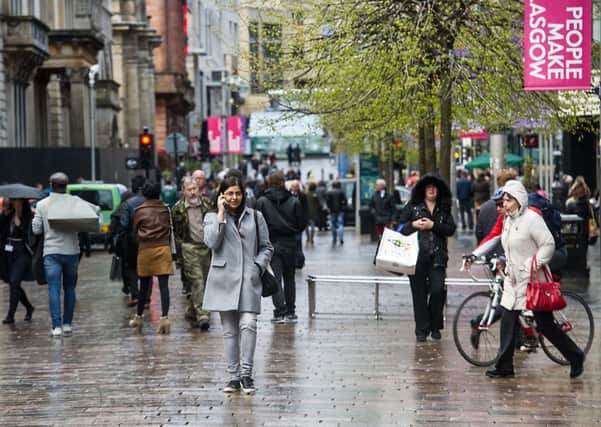Inflation jumps to 2.9% on rising clothing and fuel prices
This article contains affiliate links. We may earn a small commission on items purchased through this article, but that does not affect our editorial judgement.


Figures from the Office for National Statistics (ONS) showed the consumer prices index (CPI) measure of inflation was 2.9 per cent in August, outstripping economists’ expectations of 2.8 per cent.
• READ MORE: Markets and economy news
It brings an end to a momentary pause in June and July at 2.6 per cent, and matches levels seen in May this year and June 2013. CPI was last higher in April 2012 when the rate reached 3 per cent.
Advertisement
Hide AdAdvertisement
Hide AdSterling built on earlier gains following the news and was up 0.7 per cent against the dollar at $1.32. Against the euro, the pound rose 0.6 per cent to €1.10.
Royal Bank of Scotland chief economist Stephen Boyle said: “Inflation remains stubbornly above the government’s 2 per cent target and the headline figure might move higher in the coming months. However, the concerns of early 2017 that the rate would rise and remain beyond 3 per cent for some time will not be realised.
“The impact of sterling’s 20 per cent depreciation over the last two years persists but has moderated. As recently as January, producers’ input prices were rising at 20 per cent year-on-year while output price inflation peaked at 3.7 per cent in February.
“Wage growth is modest – wages are rising at around 2 per cent year-on-year depending on the measure you choose. Other indicators of domestic inflationary pressure are subdued – services producers’ prices rose by just 0.8 per cent year-on-year between April and June. Thus, albeit slowly, consumer price inflation will return to the government’s 2 per cent target.
“These figures provide little reason to expect that the monetary policy committee’s Gang of Two rate hikers will soon be joined by enough of the other seven members to give us a rise in bank rate.”
Mike Prestwood, ONS head of inflation, said: “Clothing prices rising faster than last year, along with a hike in the cost of petrol, helped nudge inflation upwards.
“Conversely, these effects were partially offset by airfares, which rose more slowly than during last year’s summer holidays.”
Advertisement
Hide AdAdvertisement
Hide AdThe main upward pressure came from clothing and footwear prices, which climbed to its highest level since official records began at 4.6 per cent year-on-year in August.
On a monthly basis, clothing and footwear rose 2.4 per cent after a smaller hike of 1 per cent between July and August in 2016. The move was partly driven by rising import costs for retailers linked to sterling’s slump following the Brexit vote.
The ONS added: “The increase in clothing price inflation may be partly associated with the lagged response to the depreciation of sterling during 2016 as supply contracts with overseas producers may now be renewed on different terms.”
Motor fuels were also pushing the overall cost of living higher, with fuels and lubricants rising 1.6 per cent month-on-month in August following a 1.3 per cent fall last year.
The price of petrol rose by 1.8p a litre to 115.7p in August, while diesel picked up by 2p to 117.6p.
However, downward pressure came from airfares, which saw smaller hikes between July and August at 10.9 per cent, compared to a 14.4 per cent monthly jump in 2016.
The Bank of England is predicting CPI to peak at around 3 per cent next month, higher than its target of 2 per cent.
Advertisement
Hide AdAdvertisement
Hide AdGovernor Mark Carney warned last month that the pressure on families would continue for the next few quarters. Households have seen their spending power diminish as wage growth tracks below inflation.
Previously announced figures from the ONS show annual growth in wages, both including and excluding bonuses, grew by 2.1 per cent for April to June.
The CPI including owner-occupiers’ housing costs (CPIH) was 2.7 per cent in August, up from 2.6 per cent the month before. CPIH is the ONS’s preferred measure of inflation, which includes costs associated with living in, maintaining and owning a home.
The retail prices index, a separate measure of inflation, was 3.9 per cent last month, rising from 3.6 per cent in July.
Calum Bennie, savings expert at Scottish Friendly, said: “Family finances are going to be stretched for some time to come and the increase in inflation just exacerbates this. Until wage growth outpaces inflation, consumers will do the only sensible thing and reduce their outgoings, particularly on big ticket items such as cars, TVs and home improvements.
“However, hopefully this will not be at the expense of putting money aside for their financial future.”